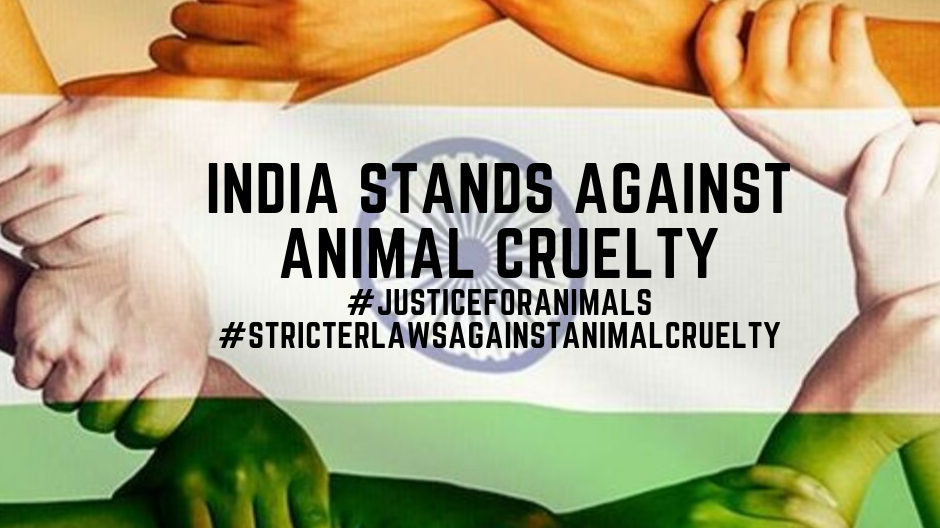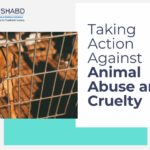In the tapestry of human culture, animals play an essential role. Their companionship enriches our lives, yet, paradoxically, they are often subjected to unthinkable cruelty. In India, the need for stringent measures against animal cruelty has never been more pressing. How can we, as a society, galvanize action to prevent such heinous acts? This query serves as an impetus for reflection and advocacy.
In recent decades, India has made notable strides in enacting laws aimed at protecting animals. The Prevention of Cruelty to Animals Act, 1960, lays down a foundational framework for safeguarding the rights of animals. It criminalizes various forms of cruelty, including mutilation, abandonment, and illegal animal breeding. However, despite these legal provisions, enforcement remains a significant challenge. A mere legislative framework cannot function effectively without robust implementation. This brings us to the pivotal role of non-governmental organizations (NGOs) and grassroots movements.
NGOs dedicated to animal welfare operate as the vanguards of change. They work diligently to enact reforms, create awareness, and provide care for animals in distress. Organizations such as PETA India, the Animal Welfare Board of India, and the Blue Cross are instrumental in advocating for the enforcement of existing laws and the introduction of new legislation. A specific area that deserves attention is educational outreach. NGOs often conduct workshops and programs in schools, instilling the values of compassion and empathy towards animals in young minds. This educational dimension is crucial for fostering a culture of respect for all living beings.
Additionally, collaborative initiatives involving law enforcement can enhance the efficacy of animal protection laws. Training sessions aimed at empowering police officers and judicial personnel with the knowledge of animal rights can catalyze change. When those tasked with upholding the law are equipped with the necessary understanding, the possibility of successfully prosecuting animal cruelty cases increases. Hence, fostering a symbiotic relationship between NGOs and law enforcement plays a pivotal role in strengthening the legal framework against animal cruelty.
While institutional frameworks and organizations are vital, cultural change must underlie all efforts to eradicate animal cruelty in India. Cultural attitudes toward animals often dictate the level of protection they receive. In many regions, animals are perceived as mere commodities. Shifting this perspective necessitates a profound societal transformation that champions empathy and compassion. Engaging local communities through innovative campaigns that celebrate the unique bond between humans and animals can facilitate this transformation. By narrating compelling stories of animals and their intrinsic value, we can shift hearts and minds.
Moreover, social media serves as a powerful tool in this regard. Digital platforms can amplify voices advocating for animal rights, create community-driven movements, and mobilize resources. Viral campaigns that spotlight instances of animal cruelty can galvanize public outrage, compelling lawmakers to enact change. Harnessing the potential of social media not only raises awareness but also encourages civic participation in animal protection initiatives.
However, the challenge remains: how do we engage with individuals who view animal rights as secondary? The key lies in illustrating the interconnectedness of human and animal welfare. A society that harms animals inevitably fosters an environment where human rights can also be compromised. Drawing parallels between animal cruelty and broader social justice issues can invoke a sense of shared responsibility amongst citizens. By reframing the narrative, it is possible to cultivate broader support for animal rights beyond the traditional activist circles.
Legislation, NGO efforts, and cultural change collectively contribute to the fight against animal cruelty. But we must also look towards community involvement. Local communities wield great power in addressing issues at a grassroots level. When individuals within a community actively participate, adopting advocacy roles through local shelters or by volunteering for welfare initiatives, they contribute significantly to the cultural shift required to mitigate animal cruelty. This approach nurtures collective responsibility, reinforcing the notion that animal welfare is a shared societal obligation.
It is essential to address common misconceptions surrounding animal welfare initiatives. Some may argue that resources spent on animal welfare could be better allocated to human welfare. This perspective is limiting; nurturing a compassionate society toward all living beings enhances our collective humanity. Promoting animal welfare does not diminish the importance of human rights. On the contrary, it elevates the ethos of kindness that binds the fabric of society together.
Moreover, encouraging participation in animal welfare legislation can stimulate civic engagement. Initiatives such as petitioning for stricter laws against animal cruelty can empower individuals and community groups. The power of collective action cannot be overstated. By galvanizing public support for animal-friendly legislation, citizens can hold the government accountable for implementing stringent animal protection measures.
In conclusion, the pathway to curtailing animal cruelty in India necessitates a multi-faceted approach that intertwines legislation, societal engagement, and cultural transformation. NGOs, grassroots initiatives, and individual advocates united in purpose can create a formidable force against cruelty. The time has come to amplify the voices of those who cannot speak for themselves. Are we ready to embrace the collective responsibility of sparking change for animals in India? The challenge looms, but so does the opportunity to instigate a significant turning point in the narrative of animal welfare.








